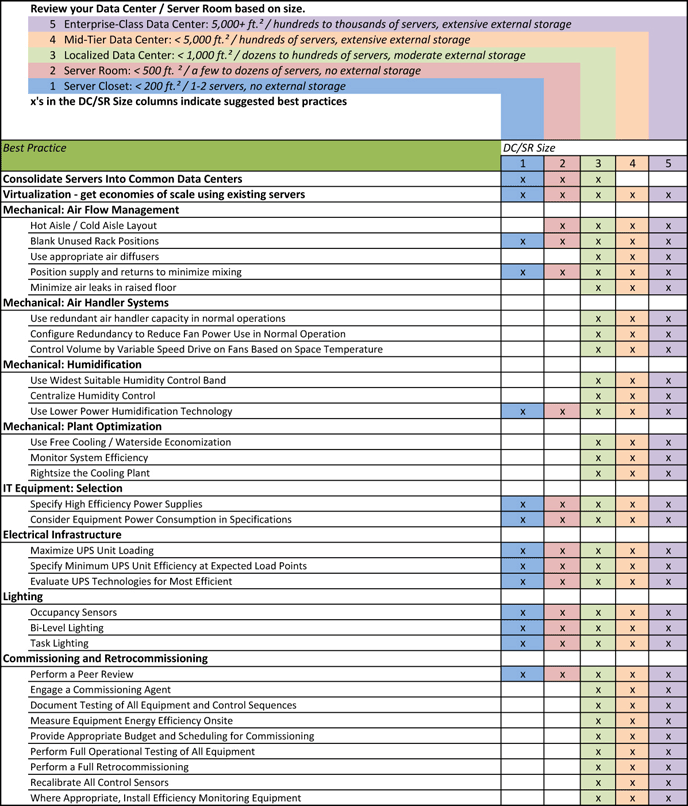Data Center/Server Room Best Practices
There are many areas identified as server rooms or data centers—from small server closets to large enterprise data centers, each with unique needs. Despite differing specifications, one key energy-conservation practice is to remove servers from undesignated spaces. Servers should be housed in a server closet, server room or data center that adheres to the energy-saving best practices.
Consider Shared Services
Consider using shared services instead of running your own, or get together with other similar units to collaborate on services not available centrally.
Conserve Power While Providing Services
Inventory your servers and turn off those not actually providing a service. Consider virtualizing remaining servers.
Improve the Efficiency of Your Server Environments
Consolidate servers, moving them from office space and server closets to larger data centers and follow Data Center/Server Room Best Practices.
Best Practices for Data Center Management
Review the best practices for the type of data center/server room that best fits your space:
| Type | Size | # of Servers | External Storage |
|---|---|---|---|
| Server Closet | less than 200 sq. ft. | 1-2 | none |
| Server Room | less than 500 sq. ft. | a few/dozens | none |
| Localized Data Center | less than 1,000 sq. ft. | dozens/hundreds | moderate |
| Mid-Tier Data Center | less than 5,000 sq. ft. | hundreds | extensive |
| Enterprise-class Data Center | more than 5,000 sq. ft. | hundreds/thousands | extensive |
These best practices are primarily based on the Center of Expertise for Energy Efficiency and Data Centers and mapped by applicability to various data center sizes based on the EPA's Typical IT Equipment and Site Infrastructure System Characteristics by Space Type.

